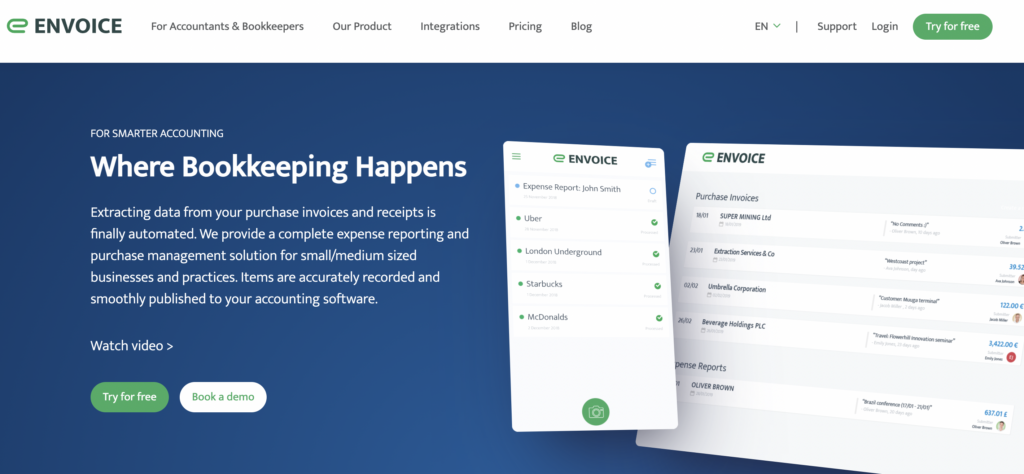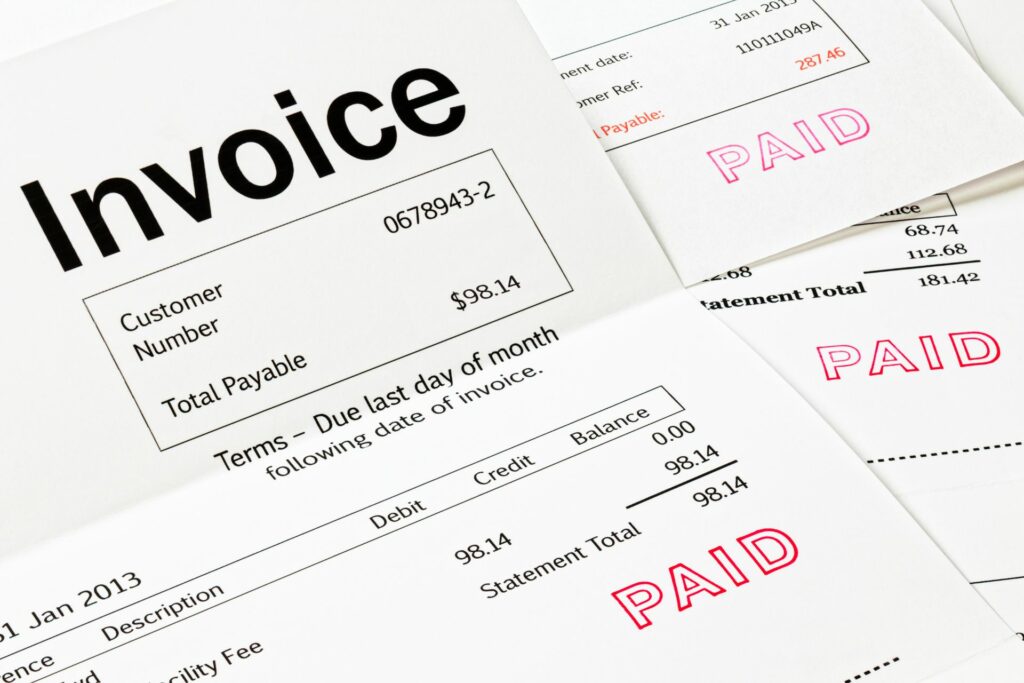15 Accounts Payable Best Practices in 2024

Accounts Payable tasks are essential for preserving a strong vendor relationship and a healthy cash flow. Unfortunately, AP teams usually face multiple challenges in their daily work.
Discrepancies between invoices and purchase orders, slow processing, unauthorized purchases, and sending payment before delivery are only some of those challenges.
The good news is that any AP department can become best-in-class by the way they handle their overall processes, from data entry to payment.
In today’s post, we’ll share the best practices an AP team can take to minimize or eliminate those issues and keep their department from becoming the best it can be.
What are Accounts Payable?
AP, or simply “payables,” are the company’s short-term obligations owned to suppliers and creditors. These obligations are not yet paid and appear in the balance sheet as a liability.
The AP department or division is tasked with making these payments owned by the company. It typically handles invoices and bills, and they do other functions as part of the accounts payable processes. This depends on the nature and size of the business.
15 Accounts Payable Best Practices in 2024

1. Make Your Approval Process More Efficient
The AP approval process enables businesses to manage and monitor cash outflow. It’s beneficial, sure. But it can also get messy.
And the more complex your approval process, the more likely you’ll have late payments and errors. Therefore, look at your current workflows and check if there are bottlenecks in the approval process.
Outline each step of the process and make it more efficient.
2. Organize Invoices
The second accounting best practice is to keep track of what needs to be paid and when.
This is important to avoid late payments. Remember that businesses or suppliers not paid on time would limit cash flow and hinder business growth, impacting future business relationships.
Depending on the size of your business, you may even have hundreds or thousands of invoices weekly. If you run a seasonal business, you likely often experience invoice volume spikes in certain periods. When it happens, it becomes difficult to ensure accurate and timely payments.
So, organize and pay your invoices properly – by payment terms and due date.
3. Establish Internal Controls and Limit Access
The next best practice in the AP process is establishing internal controls and separation of duties within your accounts payable process. Doing so helps prevent business fraud.
Furthermore, by having certain employees who can access the Master Vendor File, your AP department can have better control and easily determine approved vendors.
It’ll help you track if a fake vendor was created in the system to embezzle money and see where checks and invoices are going.
4. Build and Maintain Strong Vendor Relationships

A company’s AP department is only as successful as its vendor relationships. Building and maintaining a strong vendor relationship help you get better deals on services and goods needed to run your business.
Keep in mind that building mutually beneficial and lasting vendor relationships takes effort, time, and the right approach.
When done wrong, you’ll end up with an unreliable supply chain. This may consequently put your business at risk and negatively impact your customers.
If vendor relationships are strained due to poor payment history, try to look into inefficiencies in your AP process.
Clear communication and fewer errors result in positive vendor and supplier relationships. Consider converting to e-payment methods or real-time digital transfers of payments when paying vendor or supplier invoices. This can reduce, if not completely eliminate, late vendor or supplier payments.
5. Automate Your Accounts Payable Process

This is one of the most essential AP best practices in 2024 and beyond. Automating your accounts payable process will streamline your end-to-end invoice process. It will also enable your department to receive invoices quickly and orderly.
In so doing, you’ll likewise manage general ledger posting and approver assignments and offer real-time notifications and reporting.
Another benefit of automating your AP process is it allows you to set up warning alerts for unusual activity. This assists your business in targeting human error and fraud risks.
Furthermore, automation allows you to reduce professional work hours, like manual data entry. As a result, there’s a potential to save money. Most of all, your AP team can focus more on critical projects that will keep the company moving forward.
Envoice is an expense and purchase management platform that easily integrates with leading accounting software on cloud and desktop. Automating your AP process with this tool is easy. Find out how.
6. Review Data Regularly
You can keep adequate checks on your cash flow by having constant visibility in your bottom line, including the accounts payable data. It helps to determine red flags and prevent common bottlenecks.
Advanced reporting and analytics will:
- Increase working capital
- Improve cash flow planning
- Reduce fraud and identify risk
- Establish an audit trail
- Show trends in AP processes
Related: How to Reconcile Accounts Payable
7. Involve Your AP Team

Your AP team shouldn’t be standalone. It should be a key function in the company and be involved with other departments.
Accounting, finance, and procurement are only some departments dependent on and heavily involved with the accounts payable team. Other teams, like legal and HR, could likewise be involved.
Processes, such as payroll, rely on AP data, too. Both external and internal payments need to comply with the regulations.
Getting buy-in from your AP team is vital to implement a defined workflow and automation successfully. Be aware that other members may suspect their jobs will be replaced by a tool during the transition. You can assure them it’s not a replacement for human talent but an augmentation.
If you demonstrate how AP automation will eliminate mundane tasks and make them more productive, they’ll be less fearful and more curious.
8. Embrace a Hybrid Work Environment
This work setup is a big departure from the conventional work model. It’s a modern and flexible working method. One that will greatly benefit the accounts payable department.
More so, a Wakefield Research survey says that 47% of employees now prefer a hybrid working model. [1]
However, businesses with manual AP processes will continue to face inefficiencies and bottlenecks despite adopting a new work environment.
So, it’s important for firms to automate and centralize their AP process. That way, their AP teams can immediately process invoices and payments once they have automated the process. It improves control, efficiency, and visibility relative to manual processes.
9. Remove and Prevent AP Fraud

There’s always a possibility of fraud in the AP process, especially if it involves money. There are several sources of fraud, such as suppliers, cybercriminals, and even your employees when they’re processing invoices.
The chance of fraud is even higher when they’re processing paper invoices and checks. Therefore, mitigating that risk is directly linked to following procedures and policies. Accounts payable automation helps combat such a challenge.
You can also focus on vendor accounts where fraud can happen. Set system parameters where staff that cut checks can no longer create new vendors and eliminate AP fraud altogether.
10. Resolve Invoice Disputes Quickly and Effectively
Disruptions in invoice payments can cause problems with the business’ cash flow. Resolving issues quickly and effectively helps keeps your cash flow on the track, books in order, maintain vendor relations, and organize your AP processes.
Imagine – if a vendor issue occurs where a discount wasn’t applied or you were overcharged, you lose the ability to argue. Thus, it is necessary to keep track of vendor disputes and resolutions. Doing so allow you to track funds efficiently.
11. Look Around For Early Payment Discounts
Some suppliers offer early payment discounts. For example, they may grant a 2% discount if the invoice is paid in full in 10 days. For complete and timely payments, some creditors may likewise lower interest rates.
You can reduce your accounts payable cost and improve cash flow by taking advantage of these discounts from suppliers and vendors. Still, it’s better to enquire about these discounts ahead of time because they are not usually promoted.
12. Check for Duplicate Payments

Duplicate payment is a major financial drain in businesses. Surprisingly, studies suggest that duplicate payments comprise about 1% of all invoices paid. [2]
When your staff accidentally pays for the same invoice twice, this inhibits your company’s financial progress and eats into your margin.
This is why it’s important to always check for duplicates. This applies whether you have an automated tool for payment processing or manually matching invoice numbers. Remember that taking care of the problem is easier before it leaves your hands.
It keeps your books and lessens leaks in cash flow.
13. Cross-Train Your Team
Cross-training your AP staff for different functions within the department is a great practice. Come to think of it – your vendors won’t have to wait until Jane or John returns from vacation to get a check from your company.
Cross-training and rotating them to work on other tasks allows your business to be covered in case one is absent. It will also be a theft deterrent as a fresh set of eyes will review the AP process.
14. Assign a Project Manager for the Transition
Assigning responsibility for your AP process, especially for the automation project, is vital. Hence, one person should spearhead such a transition.
This project manager should oversee the implementation and must coordinate with the implementation vendor. In addition, they will serve as the point of contact should the management prefer to use a technology consultant to ensure a successful implementation.
They will also ensure that such an employee is freed from daily AP tasks since monitoring the transition process can only be temporary.
Related: Accounts Payable Management – How to Do it Effectively
15. Use KPIs
One of the best AP practices is to use Key Performance Indicators and gather insights into your business. This allows you to strategize.
With a single dashboard, you can see your finances and cash flow and pinpoint areas ripe for improvement.
With metrics, you can have a real-time understanding of your business’ financial aspect and use those data to reconfigure inefficient workflows and make smarter decisions.
Benefits of Accounts Payable Automation
- More time – You save time by speeding up the invoice process. Once you set up the system, set reminders, and have the right people use it, your employees will have more time to focus on meaningful tasks.
- More savings – Your business won’t miss early payment discounts.
- Increased supply chain transparency – You can track data within the dashboards. It makes it easier to review vendor and employee productivity and ensure everyone is fulfilling their contracts or roles.
- Reduced invoicing costs – Once you set up automation in your department, the chance for human error is reduced. Then, you can process more invoices without hiring more employees, and you won’t have to worry about missed payments and delays.
- Improved data accuracy – Manually inputting data is time-consuming, boring, and repetitive. People make mistakes, too, and the chance of errors multiplies with every person involved in the manual process. With AP automation, you will have accurate data you can trust.
Related: How to Switch to a Paperless Invoice Approval System
Maximize Your Accounts Payable Performance Today

Each practice in this list can help maximize your account’s performance.
The sooner you implement these practices, especially transitioning from paper to digital workflows, the more beneficial it’ll be for your AP team and business.
Not only will it reduce invoice processing costs, but it will also lead to more cooperative teamwork, improved accuracy, and easier compliance and monitoring.
Still, best practices alone won’t guarantee an organization’s success. That’s because they do not always apply to every instance and all business settings. They only serve as guidelines. Moreover, they’re only as good as those who implement them.
But you can keep the momentum of success by choosing the right accounting tool.
Want to tap into all those automation benefits for your business? Check out Envoice.
It’s a complete pre-account solution that helps automate workflows for purchases and expenses, offering value across the board.
Footnotes:
STAY ALWAYS TUNED
Subscribe to newsletter
Still not sure?
- Don’t spend time on manual work
- Streamline bookkeeping processes with AI
- Automate invoice processing
- Integrate with the tools you rely on every day












